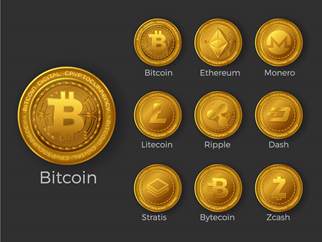How Many Cryptocurrencies Are There?
The cryptocurrency market is a vast, ever-evolving landscape, with new projects sprouting up all the time. With so much choice, it can be overwhelming to try to keep track of them all. So just how many cryptocurrencies are there? The answer, as you might expect, is not straightforward. However, according to CoinMarketCap, one of the leading cryptocurrency data aggregators, there are currently over 13,000 different cryptocurrencies listed on its platform. This number is constantly fluctuating, as new projects are launching and others fail or are abandoned.
Different Types of Cryptocurrencies
Within the vast cryptocurrency ecosystem, there are many different types of cryptocurrencies, each with its unique characteristics and use cases. One way to categorize cryptocurrencies is by their underlying technology. The two main types of cryptocurrencies are:
- Bitcoin and Altcoins: Bitcoin is the original cryptocurrency, created by Satoshi Nakamoto in 2009. Altcoins are all other cryptocurrencies that came after Bitcoin.
- Coins and Tokens: Coins are native to a specific blockchain network and are used to pay for transaction fees and other network operations. Tokens, on the other hand, are built on top of existing blockchains and represent a specific asset or utility.
Cryptocurrencies can also be categorized by their purpose. Some of the most common types of cryptocurrencies include:
- Currency coins: These cryptocurrencies are designed to be used as a medium of exchange, similar to traditional fiat currencies.
- Utility tokens: These tokens are designed to provide access to a specific product or service on a blockchain network.
- Security tokens: These tokens represent ownership in a real-world asset, such as a company or a piece of real estate.
- Meme coins: These cryptocurrencies are often created as a joke or based on internet memes, with little to no underlying value or utility.
The Future of Cryptocurrencies
The future of cryptocurrencies is uncertain, but there is no doubt that they are here to stay. As technology advances and regulations evolve, we can expect to see even more innovation and adoption of cryptocurrencies in the years to come. Whether you’re a seasoned investor or just starting to learn about crypto, it’s important to stay informed about the latest developments in this rapidly changing field. By understanding the different types of cryptocurrencies and their potential use cases, you can make informed decisions about which ones may be right for you.
How Many Cryptocurrencies Are There?
With the advent of Bitcoin in 2009, the world of digital currency was born. Since then, the cryptocurrency market has exploded, with thousands of new coins and tokens emerging. As of this writing, there are over 20,000 different cryptocurrencies in existence, each with unique features and purposes.
The sheer number of cryptocurrencies can be overwhelming, and it can be difficult to know where to start. Newcomers to the crypto world may wonder, “How do I choose the right one?” or “Which cryptocurrencies are worth investing in?” While there are no easy answers to these questions, there are a few things to consider when making investment decisions.
Types of Cryptocurrencies
Cryptocurrencies can be divided into several categories based on their functions and characteristics. Some of the most common types include:
- Bitcoin and other major cryptocurrencies: These are the most well-known and widely traded cryptocurrencies, such as Bitcoin, Ethereum, and Litecoin. They have a large market capitalization and are often used as a store of value or for making payments.
- Altcoins: This term refers to all cryptocurrencies other than Bitcoin. There are thousands of altcoins, each with its unique features and purposes. Some altcoins are designed to be more secure or efficient than Bitcoin, while others offer new features, such as privacy or the ability to create decentralized applications.
- Stablecoins: These cryptocurrencies are designed to maintain a stable value, typically pegged to a fiat currency such as the US dollar. Stablecoins are often used for trading or as a hedge against the volatility of other cryptocurrencies.
- Utility tokens: These are cryptocurrencies used to access specific products or services. For example, some utility tokens can be used to purchase access to decentralized applications, while others can be used to purchase goods and services from specific businesses.
The Future of Cryptocurrency
The future of cryptocurrency is uncertain, but it is clear that it is a technology with the potential to revolutionize the way we think about money and finance. Cryptocurrencies offer several advantages over traditional fiat currencies, such as increased security, transparency, and efficiency. As the technology continues to develop, it is likely that cryptocurrencies will become more widely accepted and used by businesses and consumers alike.
What are your thoughts on the future of cryptocurrency? Will it become a mainstream form of payment? Or will it remain a niche technology used by a small number of enthusiasts? Only time will tell.

No responses yet